Topics List
Jun. 12, 2020 Updated
Signing of the “Basic Agreement on the Development of the Epsilon S Launch Vehicle and the Implementation of the Launch Service Business”
|
The Japan Aerospace Exploration Agency (JAXA) is pleased to announce that it has entered into the Basic Agreement with IHI AEROSPACE CO., LTD. (IA) on the development of the Epsilon S Launch Vehicle and its launch service business. The Epsilon S Launch Vehicle, which will be developed based on the current Enhanced Epsilon, is aimed at strengthening Epsilon’s international competitiveness in the satellite launch market by achieving synergistic effects with the H3 Launch Vehicle, a large-size liquid-propellant rocket currently under development. The Basic Agreement specifies essential matters such as roles of JAXA and IA during the development and operational stages. The main goal is to establish a framework which enables the private business operator IA to independently expand its launch service business using the Epsilon S Launch Vehicle, as well as to transform Japan’s space transportation system into an independent and sustainable business structure by maintaining and advancing the space industrial basis. Based on this Basic Agreement, JAXA and IA will advance joint efforts to develop the Epsilon S Launch Vehicle and its launch service business approach. |

|
|---|
Jan. 18, 2019 Updated
Successfully of Epsilon-4 Launch With The Innovative Satellite Technology Demonstartion-1 Aboard
|
At 9:50:20 a.m. (Japan Standard Time) January 18, 2019 JAXA launched Epsilon-4, the Fourth Epsilon launch vehicle With The Innovative Satellite Technology Demonstartion-1. From the JAXA Uchinoura Space Center. The launch occurred on time. The launch and flight of Epsilon-4 took place normally. Approximately 51 minutes 55 seconds into the flight, the separation of "The Innovative Satellite Technology Demonstartion-1" proceeded, with confirmation as successful. |
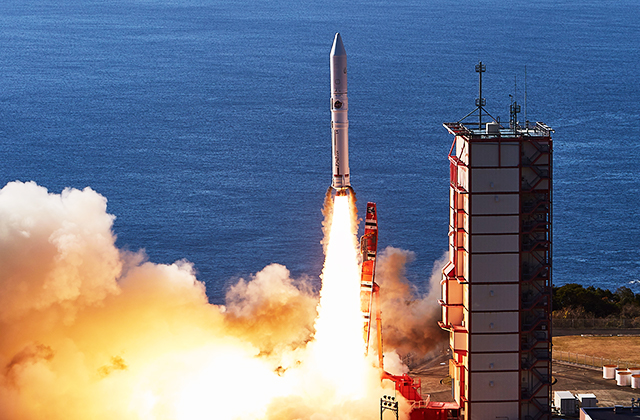
|
|---|
Jan. 16, 2019 Updated
The Innovative Satellite Technology Demonstartion-1 aboard Epsilon-4 launch time decided! Live broadcast from 9:25 a.m. on January 18 (Fri.)
|
The launch time of the Epsilon-4 with the Innovative Satellite Technology Demonstartion-1 was set for 9:50:20 a.m. on January 18 (Fri.), 2019 (Japan Standard Time.) |
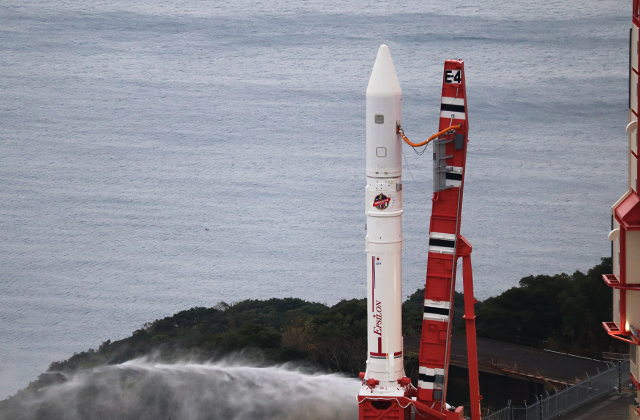
|
|---|
Jan. 15, 2019 Updated
The Innovative Satellite Technology Demonstartion-1 launch postponed to Jan. 17 (Fri., JST)
|
The Innovative Satellite Technology Demonstartion-1 launch postponed to Jan. 18 (Fri., JST) |
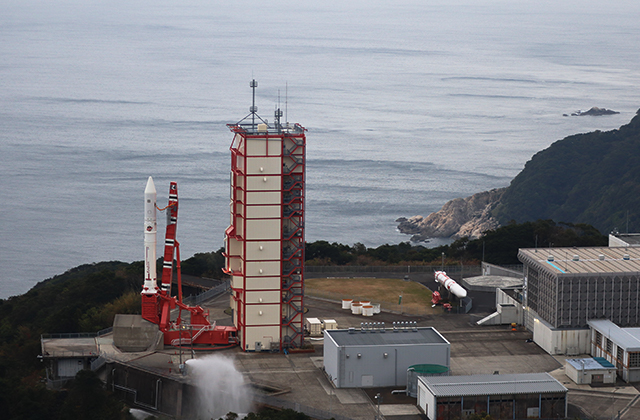
|
|---|
Nov. 30, 2018 Updated
Launch of Epsilon-4 with the Innovative Satellite Technology Demonstartion-1 on Board
|
JAXA announces that the Epsilon 4 launch encapsulating the innovation satellite technology is scheduled on January 17, 2019. The launch window is 9:50:20 a.m. through 9:59:37 a.m., in Japan Standard time. |
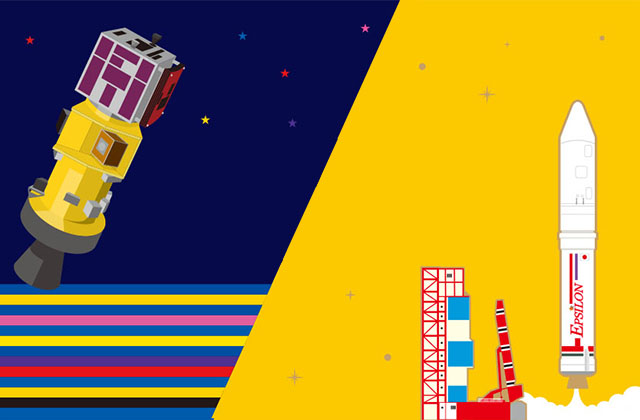
|
|---|
Jan. 18, 2018 Updated
Success of Epsilon-3 Launch with ASNARO-2 Aboard
|
At 6:06:11 a.m. (Japan Standard Time) January 18, 2017, JAXA launched Epsilon-3, the third Epsilon launch vehicle which encapsulates NEC Small radar satellite "ASNARO-2" |
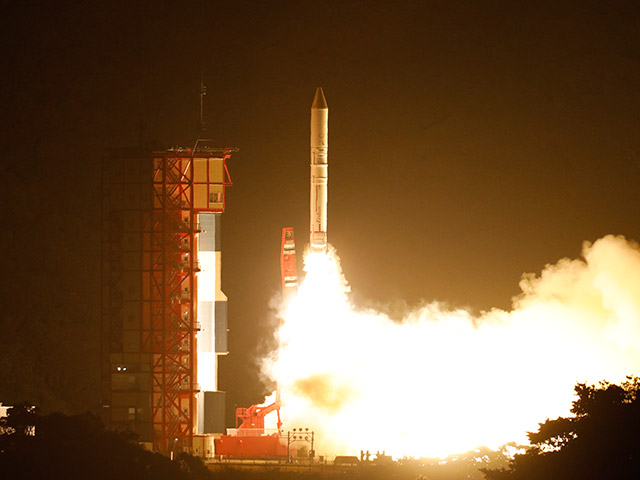
|
|---|
Jan. 16, 2018 Updated
New launch date and time of Epsilon-3/ASNARO-2 decided
|
The launch time of the second Epsilon Launch Vehicle with NEC Small radar satellite "ASNARO-2" was set for 6:06:11 on January 18 (Thu.), 2018 (Japan Standard Time). |
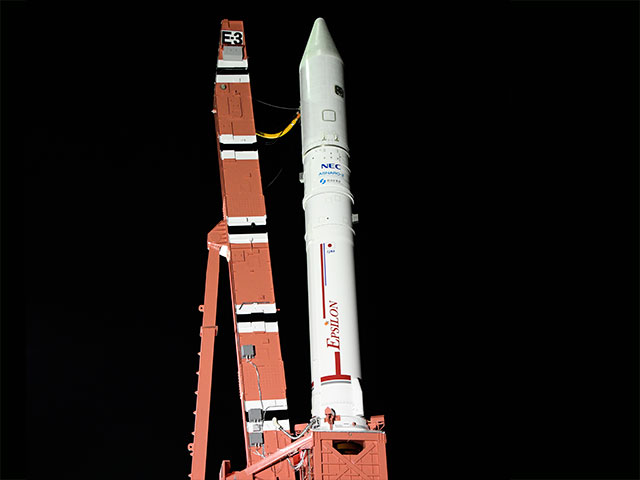
|
|---|
Jan. 15, 2018 Updated
Epsilon-3 Launch Postponement with ASNARO-2 aboard
|
In light of adverse weather predicted for the launch day, JAXA postponed the launch of Epsilon-3, the third Epsilon launch vehicle which encapsulates NEC Small radar satellite "ASNARO-2" *, from the JAXA Uchinoura Space Center, to no earlier than January 18, 2018. |

|
|---|
Dec. 8, 2017 Updated
Epsilon-3/ASNARO-2 new launch date decided!
|
JAXA has updated the launch date of the Epsilon-3 which encapsulates the ASNARO-2. The Epsilon-3 launch, originally scheduled for November 12, 2017, was postponed as its electrical system needed further confirmation. JAXA has identified and taken countermeasures against the factor that delayed the launch. The new launch date will be January 17, 2018. |
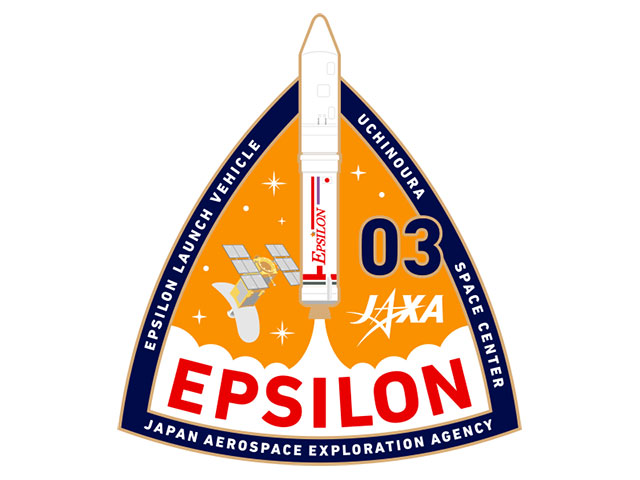
|
|---|
Sep. 29, 2017 Updated
Launch Postponement for Epsilon-3 Launch Vehicle with ASNARO-2 onboard
|
The Japan Aerospace Exploration Agency (JAXA) decided to postpone the launch of the third Epsilon Launch Vehicle (Epsilon-3) with the Advanced Small-size Radar Satellite (ASNARO-2) on Board to November 12, 2017, from the Uchinoura Space Center. |
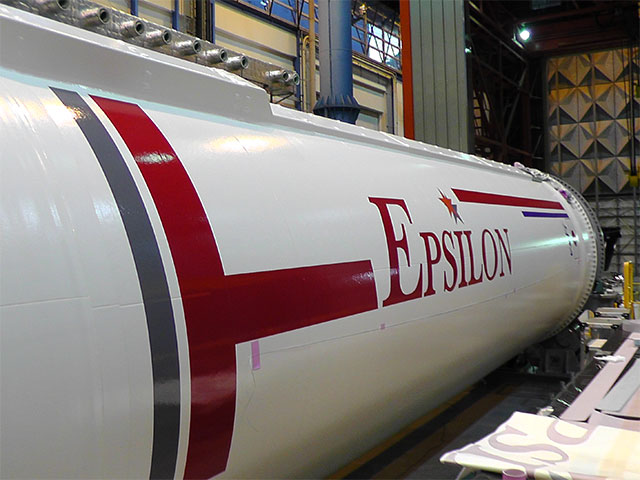
|
|---|
Sep. 12, 2017 Updated
T-8 weeks+, ASNARO-2/Epsilon 3 Launch on November 12
|
JAXA announces that the Epsilon 3 launch encapsulating the second Advance Satellite with New System Architecture for Observation (ASNARO-2) is scheduled on November 12, 2017. The launch window is 6 a.m. through 6:35 a.m., in Japan Standard time. |
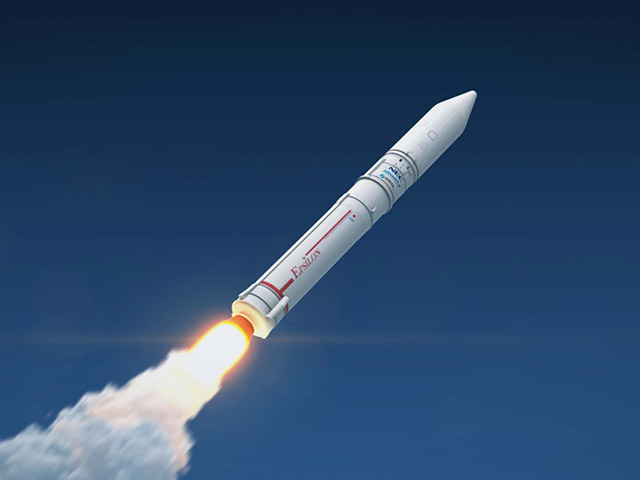
|
|---|
Jul. 12, 2017 Updated
Send EPSILON-3 up to Space with Cheer
|
JAXA is inviting all to write notes to cheer on the project members and the mission of Epsilon-3, to be launched this fiscal year. |
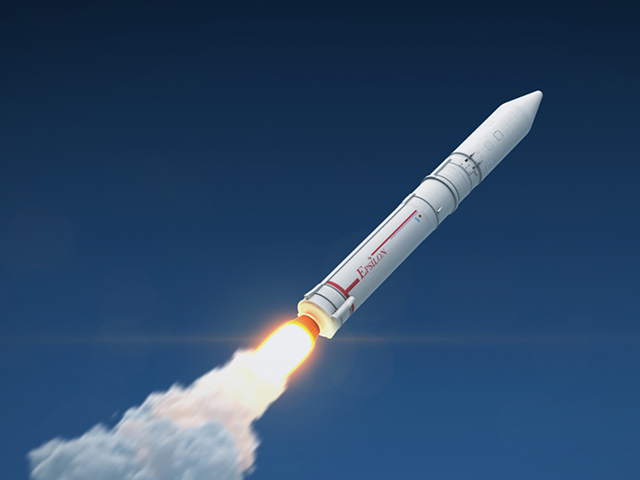
|
|---|
Dec. 20, 2016 Updated
Success of Epsilon-2 Launch with ERG Aboard
|
JAXA successfully launched the second Epsilon Launch Vehicle with Exploration of energization and Radiation in Geospace (ERG) aboard at 8:00 p.m. on December 20, 2016 (JST) from the Uchinoura Space Center. The launch vehicle flew as planned, and at approximately 13 minutes and 27 seconds after liftoff, the separation of ERG was confirmed. The signals were received in the Santiago Ground Station, the Republic of Chile at 8:37 p.m. (JST). ERG's solar array paddles have been deployed as planned.
Also, ERG has completed the attitude control based on the sun acquisition. |
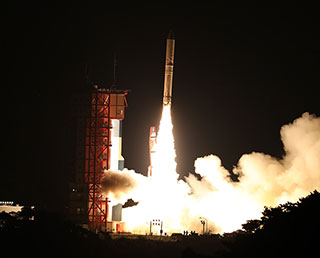
|
|---|
Dec. 19, 2016 Updated
Epsilon-2/ERG launch time decided! Live broadcast from 7:40 p.m. on December 20 (Tue.)
|
The launch time of the second Epsilon Launch Vehicle with Exploration of energization and Radiation in Geospace (ERG) was set for 8:00:00 on December 20 (Tue.), 2016 (Japan Standard Time). |
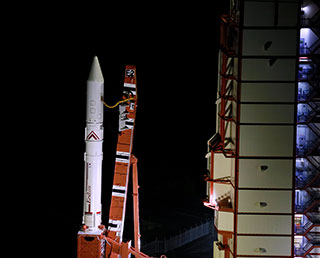
|
|---|
Nov. 15, 2016 Updated
The Launch date of the Epsilon-2 with the ERG satellite on board- December 20
|
JAXA announced that the second Epsilon Launch Vehicle with Exploration of energization and Radiation in Geospace (ERG) on board will be launched sometime between 8 p.m. to 9 p.m. on December 20, 2016 (Japan Standard Time). Live launch coverage from the Uchinoura Space Center will be carried on YouTube. More detail will be available shortly. |
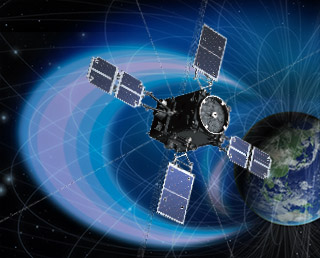
|
|---|
Dec. 22, 2015 Updated
The static firing test of the second stage motor of M-35, the enhanced Epsilon Launch Vehicle carried out
|
On Monday, December 21, JAXA conducted the static firing test of the second stage motor of M-35, the Enhanced Launch Vehicle in Noshiro Rocket Center (Noshiro City, Akita). M-35 was designed to improve the launch capabilities. The experiment was done with a view to ensuring its design, under the simulated vacuum conditions. |
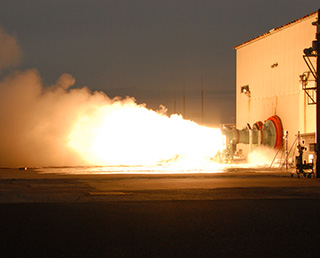
|
|---|
Aug. 6, 2015 Updated
Development progress for Enhanced Epsilon
|
The development of the Enhanced Epsilon Launch Vehicle has been going
smoothly. |
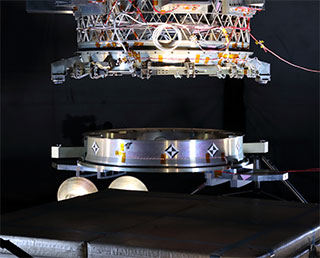
|
|---|
Nov. 7, 2013 Updated
Epsilon Launch Vehicle awarded Good Design Award Gold Award
|
The first Epsilon Launch vehicle (Epsilon-1) developed and launched by JAXA in September 2013 received the JFY 2013 Good Design Award Gold Award sponsored by the Japan Institute of Design Promotion. |
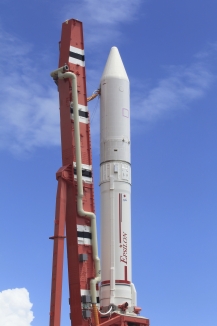
|
|---|
Sep. 14, 2013 Updated
Launch Result of Epsilon-1 with SPRINT-A aboard
|
JAXA launched the first Epsilon Launch Vehicle (Epsilon-1) with the Spectroscopic Planet Observatory for Recognition of Interaction of Atmosphere (SPRINT-A) onboard at 14:00 on September 14 (Sat.), 2013 (Japan Standard Time, JST) from the Uchinouora Space Center. |
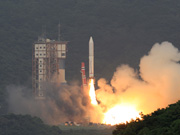 |
|---|
Sep. 12, 2013 Updated
Epsilon-1/SPRINT-A new launch date decided!
|
JAXA would like to announce that we have set the launch date and time of the first Epsilon Launch Vehicle (Epsilon-1) with the Spectroscopic Planet Observatory for Recognition of Interaction of Atmosphere (SPRINT-A) onboard as follows. |
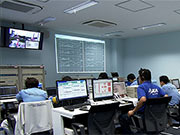 |
|---|
Sep. 9, 2013 Updated
New Launch Day Information for Epsilon-1 with SPRINT-A Onboard
|
The Japan Aerospace Exploration Agency (JAXA) decided to postpone the launch of the first Epsilon Launch Vehicle (Epsilon-1) with the Spectroscopic Planet Observatory for Recognition of Interaction of Atmosphere (SPRINT-A) onboard on August 27 from the Uchinoura Space Center. As a result of our cause investigation of the postponement and re-examination of the Epsilon-1, the new launch date will be September 14, 2013 (Japan Standard Time) or later. |
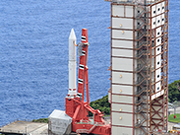 |
|---|
Aug. 28, 2013 Updated
Updated Information about Epsilon-1 Launch Day
|
The Japan Aerospace Exploration Agency is now investigating the cause of an automatic stop alarm issued approximately 19 seconds prior to liftoff during the Epsilon-1 launch countdown operation on August 27, 2013. As we have decided to carefully examine the cause and prudently confirm the measures, it is very difficult for us to set the new launch date within August. |
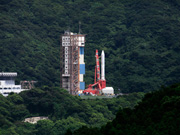 |
|---|
Aug. 27, 2013 Updated
Launch Cancellation of Epsilon-1 with SPRINT-A Onboard
|
The Japan Aerospace Exploration Agency (JAXA) cancelled today's launch of the first Epsilon Launch Vehicle (Epsilon-1) with the Spectroscopic Planet Observatory for Recognition of Interaction of Atmosphere (SPRINT-A) onboard from the Uchinoura Space Center, because an automatic stop alarm was issued as an attitude abnormality was detected approximately 19 seconds prior to the liftoff time during the automatic countdown sequence. The launch had been originally scheduled for 1:45:00 p.m. today (Japan Standard Time). |
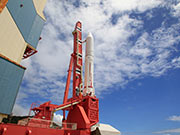 |
|---|
Aug. 8, 2013 Updated
Launch Postponement and Launch Time Change for Epsilon Launch Vehicle with SPRINT-A onboard
|
The Japan Aerospace Exploration Agency (JAXA) decided to postpone the launch of the first Epsilon Launch Vehicle (Epsilon-1) with the Spectroscopic Planet Observatory for Recognition of Interaction of Atmosphere (SPRINT-A) onboard to August 27, 2013,?from the Uchinoura Space Center as JAXA has taken extra time to rectify the incompatibility* found in the ground support equipment during the communication function test between the Epsilon-1 and the equipment in the course of launch campaign at the launch site. The launch was originally scheduled for August 22, 2013 from the center. |
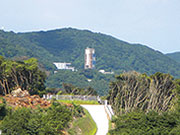 |
|---|
Jun. 17, 2013 Updated
Epsilon Support Message Campaign result!
|
The Message Campaign for the first Epsilon launch vehicle scheduled to be launched on Aug. 22 was held in April and May, and the result of the campaign is now available on our website. |
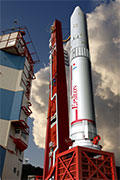 |
|---|
May 21, 2013 Updated
Spectroscopic Planet Observatory for Recognition of Interaction of Atmosphere (SPRINT-A) launch by Epsilon-1
|
The first Epsilon Launch Vehicle (Epsilon-1) with the Spectroscopic Planet Observatory for Recognition of Interaction of Atmosphere (SPRINT-A) onboard is determined to be launched on August 22 (Thursday, Japan Standard Time). The launch time is between 1:30 thru 2:30 p.m. (JST), and the launch site is the Uchinoura Space Center. |
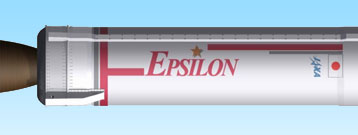 |
|---|
Apr. 10, 2013 Updated
Epsilon Message Campaign
|
The Japan Aerospace Exploration Agency (JAXA) will launch the first Epsilon Launch Vehicle (Epsilon-1) in the 2013 summer launch season from the Uchinoura Space Center in Kimotsuki, Kagoshima Prefecture, with the spectrographic planet observation satellite (SPRINT-A) onboard. |
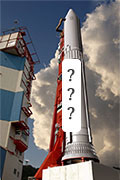 |
|---|
Oct. 15, 2012 Updated
Extension test of the second stage motor nozzle
|
The extension test of the second stage motor nozzle of the Epsilon Launch Vehicle was held at the Sagamihara Campus in late September. |
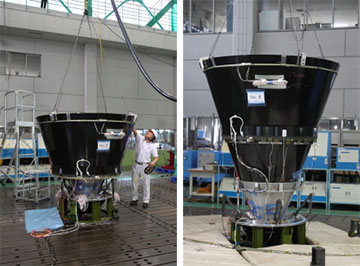 |
|---|
Jul. 18, 2012 Updated
PBS pyro-shock test
|
Loaded with a small liquid-fuel engine, the Post Boost Stage (PBS) will be additionally installed on the top of the third stage when higher orbit insertion accuracy is required. The pyro-shock test of the PBS was performed at the Sagamihara Campus in mid June. |
 |
|---|
Apr. 17, 2012 Updated
Epsilon: acoustic environment measurement test at mockup launch pad
|
JAXA made a mockup launch pad on a scale of 1/42 in order to confirm the acoustic environment according to the launch pad configuration. The mockup was based on the design analysis performed mainly by the Epsilon Launch Vehicle Project Team. The acoustic environment measurement test at the mockup launch pad by a small-scale solid motor has been held three times since April 2011 at the Noshiro Rocket Testing Center. |
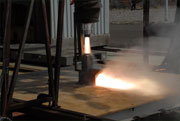 |
|---|
Sep. 30, 2011 Updated
Static firing test for the upper stage sub-size motor
|
On September 30, JAXA performed the ground firing test of the sub-size motor (M-34SIM-3) for the Epsilon Launch Vehicle upper stage at the Noshiro Rocket Testing Center. The test mainly aims to verify the insulation material on the upper motor nozzle that is currently under development. |
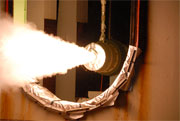 |
|---|